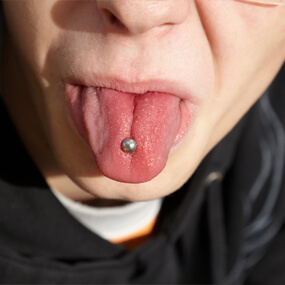Got a Cavity? Here Are Your Treatment Options

Cavities can start out as an inconvenience but will not go away on their own. Untreated tooth decay will eventually lead to significant pain, serious infections, and even tooth loss. There are different treatment options available, and your dentist will make a recommendation based on the specifics of your tooth decay.
The Three Core Types of Cavities
Plaque is the leading cause of cavities and must be brushed and flossed away on a routine basis. When plaque is allowed to build up, you are more prone to develop cavities. But not all cavities are the same. Your dentist will use dental instruments and even X-rays in some cases to determine if you have:
- Smooth surface decay—These cavities form on both the front and back smooth surfaces of the teeth. This tends to be the least serious kind of tooth decay and can even be reversed through remineralization if caught early enough. If not caught early, a filling will likely be necessary.
- Pit and fissure decay—These cavities form on the crowns or chewing surfaces of the teeth. When they occur on the back teeth, they are known as occlusal cavities. While such cavities are avoidable through proper oral hygiene, this kind of decay is quite common when oral care is inconsistent, and these cavities can accelerate to more serious tooth decay rapidly.
- Root decay—This kind of decay affects the tooth roots directly and generally means that the roots are exposed through gum recession. Since root decay is associated with receding gums, it is much more common among older people since they are more likely to have such gum health issues.
Treatment Options for Tooth Decay
While decay can undermine a tooth to the point it is not recoverable, there are treatment options available for most cavities. The treatment best suited to your problem will depend on the location and severity. Your dentist will assess your tooth and make a recommendation based on it. If multiple treatment options are available, your dentist will help you weigh the pros and cons.
Dental Fillings
A dental filling is the most common treatment option for cavities and can even be suitable in scenarios where the cavity is severe. After numbing the affected area, your dentist will drill into the tooth in order to clean all of the decayed tissue out of the cavity. In some cases, it may also be necessary to shape the cavity for better bonding with the filling material. The dentist will then fill the cavity entirely using a durable material, such as a composite resin. The resin will have a realistic color and texture and can be easily shaped by the dentist in order for it to look natural.
Dental Crowns
If decay has undermined the structure of the tooth, then it may not be practical to fill the cavity. In such cases, your dentist may recommend a crown. In order to do this, your dentist will first remove any decayed tissues and then shape the remaining tooth as needed in order to accommodate the crown. Modern dental crowns are often modeled using sophisticated CAD equipment. The shape, size, and color can all be precisely determined in order to complement your remaining teeth. Your dentist will place the crown over the real tooth and then bond it into place. Well-maintained crowns can last more than 15 years and allow you to chew and speak just as you would with an actual tooth.
Root Canal Therapy
When decay reaches the tooth pulp, which houses nerves and blood vessels, it is generally necessary to remove that pulp in order to save the tooth. The technique used is called root canal therapy or often just root canal for short. While many people associate root canals with pain, most modern procedures unfold with little to no discomfort at all. Your dentist will numb the area. He or she will then remove the infected pulp. It may be necessary to shape and otherwise prepare the canal. The space will then be filled with an endodontic sealant. Afterward, it is common for a crown to be placed over the tooth.
Last Resort: Extraction
You only get one set of permanent teeth, and if saving the tooth is an option, your dentist will generally recommend doing so. If a tooth cannot be saved or your dentist believes it not worth the effort and cost—which is often the case with wisdom teeth—the tooth will need to be extracted. Another scenario where dentists may recommend extraction is when there is a risk of an infection spreading to the jawbone. Most extractions are what is known as simple extractions and do not even require anesthesia. Some extractions, such as with impacted molars, are more complex and require incisions. An extracted tooth will leave a gap that can lead to other oral health issues. Therefore, dentists will typically recommend replacement options, such as implants, bridges, or partial dentures.
Can Cavities Go Away on Their Own?
Yes, but… Enamel does have the ability to heal itself. If you brush regularly with fluoride toothpaste as well as floss whenever you brush, the enamel will be remineralized, and cavities can go away on their own. In fact, this is an ongoing process in your mouth as your tooth enamel is worn down by acids and recovers as you take care of your teeth. However, cavities that progress beyond that initial stage are generally not reversible—at least through at-home oral care. The good news is that cavities are easily prevented with consistent oral care. You should:
- Select an appropriate toothbrush. The American Dental Association recommends both manual and electric toothbrushes but emphasizes the need for soft bristles that will not damage your enamel. Be sure to change out your brush or brush head every three months or whenever the bristles fray.
- Brush your teeth twice a day. Brush for two to three minutes. Ensure that you clean every surface of every tooth. You should also brush or scrape your tongue whenever you brush your teeth.
- The ADA recommends using a fluoride toothpaste that has the ADA Seal of Acceptance. You may also want to use a fluoridated oral rinse, but you should discuss such products with your dentist. Many dentists also recommend in-office fluoride treatments during regular checkups when the teeth are cleaned.
- Floss whenever you brush. Some dentists even recommend flossing more often. Ensure that you are using the proper technique because if you are, there is never any risk of flossing too much.
- Visit your dentist twice a year. Regular checkups are the best way to avoid cavities. Your dentist can identify cavities much earlier than patients usually can. Those early cavities can then be reversed. Your dentist will also take X-rays that can reveal oral health issues you would not otherwise be able to detect. Your dentist may even make adjustments to your oral hygiene routine and the products you use in order to ensure that you remain cavity-free and your gums remain free of infection.
Deal With Your Cavities and Avoid Them in the Future
In addition to regular brushing and flossing, the best way to avoid cavities is to have your teeth professionally cleaned by an oral hygienist and your mouth examined by Jeffrey D. Clark, DDS, every six months. If you are experiencing any indications that you may have a cavity or know that you are dealing with tooth decay, Dr. Clark encourages you to make an appointment as soon as possible. The sooner you take action, the less invasive and expensive the treatment will be. Call Scottsdale Cosmetic Dentistry Excellence at 480 585 1853 to schedule your appointment.




